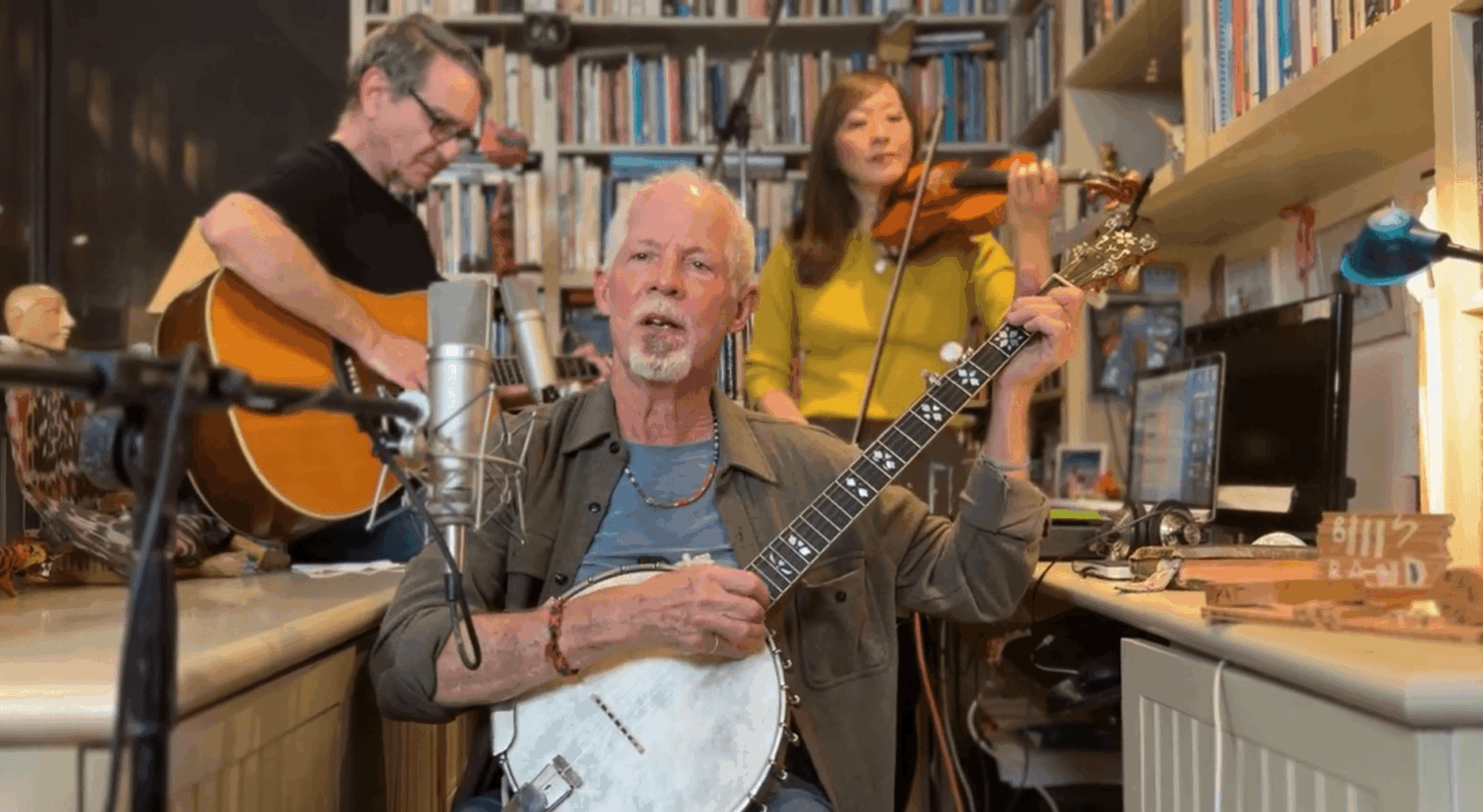We recently connected with Bill Gordh and have shared our conversation below.
Hi Bill, thanks for joining us today. We’d love to hear about a project that you’ve worked on that’s meant a lot to you.
I guess it would be one that I am currently engaged in. I am the storytelling host of the World Music Institute’s (WMI) Folktales podcast for which I tell a folktale from the culture of the guest musician as they accompany it on their instrument. It’s a dynamic way to work, storyteller and musician improvising to bring the story to life. I have loved the work of WMI for years and was thinking about how children and families might be introduced to all these amazing instruments in a way that would be exciting. Stories seemed like a likely answer and storytelling with folktales that can be told in many ways are open to the influence of music. I have been a storyteller for ages and play banjo to go with my stories. I also do a lot of work with children, families and music including many years with Jon Deak’s Very Young Composers with the New York Philharmonic. Here too we often explored how story could be used to bring musical ideas to an audience. I proposed the idea to the WMI, first thinking of it as a performance – where I might join one of their world musicians on stage for a collaborative story. Kate Winn at WMI immediately thought of its potential as a podcast, especially with COVID still around. Kate and I discussed musicians and stories and she began approaching a number of these fine musicians. They were just as enthused as we were! We went to work, finding the right folktale for each collaboration. Already 11 world class world musicians have joined the project and we have presented tales and music from West Africa, Brazil, Colombia, Morocco, China, Persia, Ukraine, Tibet, India, Ireland and Finland. Collaborators include SamiR LanGus (Guimbri), Mehrnam Rastegari (Kamancheh), Cyro Baptista (Brazilian Percussion), Saraswathi Ranganathan (Veena), Zhou Yi (Pipa), Lisa Gutkin (Fiddle), Seamus Egan (Tin Whistle), Yacouba Sissoko (Kora), Edmar Castaneda (Harp), Kardemimmit (Kantele) and Techung (Singer and Instrumentalist). Last fall (2023), we won a Spirit Gold Podcast Award. The work continues.

Bill, before we move on to more of these sorts of questions, can you take some time to bring our readers up to speed on you and what you do?
I graduated with an MFA in Theater Directing from NYU’s Tisch School of the Arts. I got interested in where theatre started, so I began working with young children and stories. I started collecting folktales and retelling them as interactive stories that would engage the children. Over the years, I designed a storytelling curriculum for early childhood. This expanded into curriculum design going up to 5th grade. I began writing about it for a number of educational journals such at CTW’s “Creative Classroom” and Scholastic’s “Pre-K Today”. Because of my engagement with folktales, I was hired as story consultant for Scholastic’s Multicultural Big Book series. Then I designed curriculum for Pre, K, First and 2nd grades for the Jacob Burns Film Center, making films in the classroom. The story and music connection led to a commission by the New York Philharmonic to create a new work with composer Jon Deak for the Philharmonic’s Young People’s Concerts. “Roaring Mountain” premiered in April, 2005 when I made my debut at Avery Fisher Hall as librettist and narrator. Jon and I are still working together. My curricular work then led to developing and leading workshops in storytelling to teach English at the Innova Schools in Peru (over 30 schools). I worked with nearly 200 teachers in Lima. I have also taught graduate level courses in storytelling and literacy. The stories and music found their way into this World Music Institute project.

How can we best help foster a strong, supportive environment for artists and creatives?
It really starts in the schools. Most often they are so gung-ho on STEM (Science, Technology, Engineering and Mathematics) that they neglect the creative arts. It’s true “A” has been added to include the arts, thus STEAM” but it seems it’s more of a “tip the hat” move than a meaningful inclusion. It is also true that creativity can thrive in math and science – it’s just that the world is a richer place with all these elements getting their time in the sun.

What’s the most rewarding aspect of being a creative in your experience?
Getting to create! Having ideas that can flourish and become forms of art that speak to people in languages of music, voice, visual media and more. The Creatives take the time to develop things others might never notice but enjoy immensely when given the means to see and hear. Creatives find ways to express feelings everyone has but have never articulated. My wife passed away 6 years ago and I began writing songs of the experience. I have now written over 50 songs and have performed them in concerts in NYC, Napa, CA and Santa Monica and they bring to people a clarity in their own understanding of grief and love.
The creating itself is rewarding.
Contact Info:
- Website: https://billgordh.com/
- Instagram: @billgordh
- Youtube: https://www.youtube.com/@BillGordh






Image Credits
John K. Kraus (Bill Gordh pic); Jesse Wong (Zhou Yi); PC Kumar V (Saraswathi Ranganathan); Hicham Laabd (SamiR LanGus); Studiobirdhaus (Mehrnam Rastegari); Natasha Marco (Bill’s Band); Makoto Ebi (Cyro Baptista)


